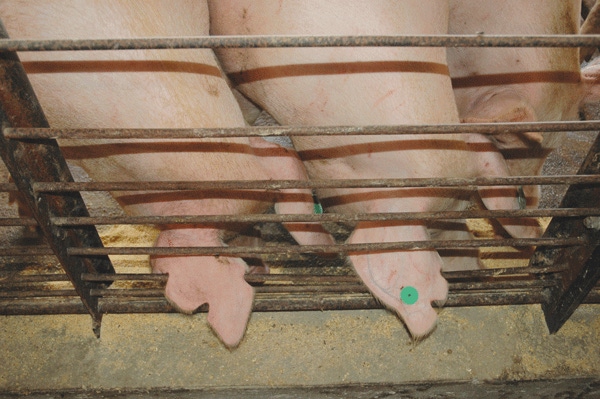February 27, 2014

The average number of pigs born per sow has increased steadily over the years. As sows continue to increase the total born, the total litter weight rises — however, not at the same proportion as the number of pigs born. Therefore, the average birth weight has a tendency to be lowered with larger litters. Data demonstrate that lower birth weight pigs have a higher chance of piglet pre-weaning mortality. Lower birth weight pigs are also delayed when it comes to days needed to reach market weight. In response to the concern of birth weights, nutritionists and reproduction specialists have been investigating ways to improve birth weights through sow feeding programs.
Recent research data demonstrated that gestating sows require 14 grams of digestible lysine at around 40-50 days of gestation (Pairat Srichana et al). However, at 90-100 days of gestation, gestating sows require 17g of digestible lysine. One way to increase the lysine allowance per day is to increase feed allowance at the end of gestation through what has been termed “bump feeding” in the industry.
Like what you’re reading? Subscribe to the National Hog Farmer Weekly Preview newsletter and get the latest news delivered right to your inbox every week!
Bump feeding involves increasing feed during the last 21 days of gestation. It has been one practice that many believe improves birth weights. Research results were presented as part of the 2009 Kansas State Days, indicating that increasing feeding levels at the end of gestation improved individual birth weights in gilt litters, but not in sow litters (Nick Shelton et al.). Additional research published in 2011 demonstrated similar findings, suggesting that increasing feed allowance improved birth weights in pigs born from gilt litters, but not sow litters. The data from Jose Soto suggest that feeding 3.9 lb. the last two weeks of gestation, compared to 1.9 or 0 lb., improved the average birth weight to 3.17 lb. compared to 3.0 lb. vs. 2.8 lb., respectively (See Figure 1).

Although studies indicate that sows require additional lysine at the end of gestation, and increasing gestation feed appears to have a benefit on piglet birth weight in gilt litters, the question remains as to whether there is economic value. Nick Shelton discussed that even though increasing feed intake in gilt and sow litters resulted in improved gilt conception rate and second parity litter weight, and improved sow lactation feed intake, economically, there was no benefit.
If improving birth weights by 0.28 lb. shifts 5% of the population of pigs out of the less-than-1.9-lb. category, their chances of survivability improves 42%, according to research. The value then lies with the cost of feed and the value of the weaned pig. Other factors to consider are that a heavier pig at birth will result in a heavier pig at weaning, and also will improve the reproductive performance for the weaned gilt. In 2012, the return on bump feeding gilts an additional 3.9 lb. of feed for two weeks prior to farrowing was 2.15:1, based on piglet survivability.
You might also like:
Many Factors are Working Together to Impact Pork Supply
You May Also Like



